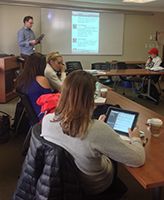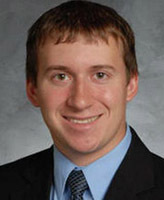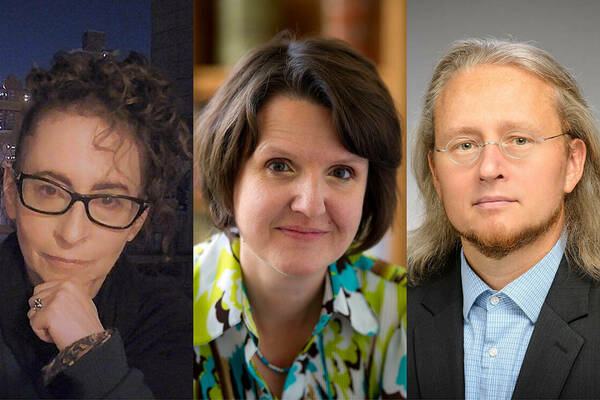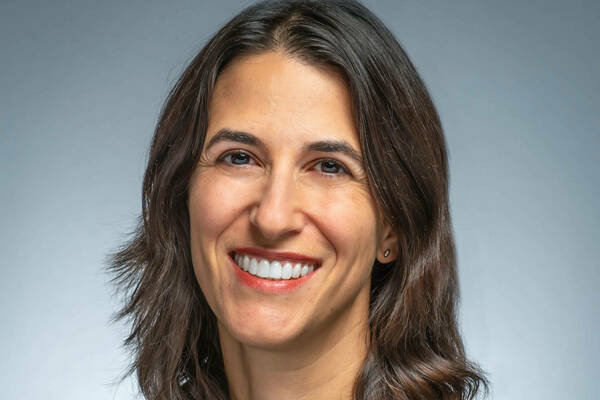
In his class, The Future of News, Notre Dame visiting assistant professor Josh Roiland not only talks about the direction journalism is now heading, but he also equips students with the practical tools to flourish within the changing profession.
“It’s kind of two different classes in one,” says Roiland, who teaches in the College of Arts and Letters’ Department of American Studies.
“We study the economic and technological changes that have hit the journalism industry in the last decade and how they have completely transformed the profession. But then we also do the practical aspect and do the future of news, which is going to be multimedia journalism.”
A Multimedia Experience
 Andrew Owens
Andrew Owens
Everyone in the class was given an iPad 3 for the semester, for both personal and academic use. As part of the course, each student maintains a blog and produces an audio podcast, a photography slideshow, an audio slideshow, and a video project. Roiland’s class this fall is the third American Studies course he has taught using iPads.
The students use a variety of apps for everything from photo editing to aggregating news. Roiland introduces about a dozen apps for each aspect of production they cover: photography, audio, and video. While most students do not begin with any multimedia experience, by the end of the class they are confidently creating stories in multiple formats, he says.
These skills prove invaluable as students leave Notre Dame and enter the journalism field, says Andrew Owens ’13, who took Roiland’s The Future of News class last year. Since graduating in May, Owens has worked as a reporter for MLB.com and is currently covering Notre Dame football and men’s basketball for Blue & Gold Illustrated.
“I’ve already had to shoot videos dozens of times,” Owens says. “I’ve used all three of the production elements we practiced, and that’s just since graduation. I think the broad overview Professor Roiland gives of where journalism is headed also prepares students to enter the industry.”
A New Community

Roiland says the iPads also give students the opportunity to join the academic conversation about the journalism industry. He provides students with a list of journalism writers and scholars to follow on Twitter. Every day, students repost a news story about a topic related to class using the hashtag #NDJED. Students follow and respond to their classmates by following the hashtag.
“What this does is create a really neat community outside the classroom where they’re still talking about the issues, but they’re applying them to all sorts of modern day news stories,” he says.
“By and large, students don’t realize how much the iPad changes their lives in terms of how they interact with the news. All of a sudden, they realize, ‘Wow, there’s this whole world that I haven’t been engaging in.’ They start picking up and just doing it on their own,” Roiland says. “They embrace it, and they have said it’s hard for them to give the iPads back at the end of the semester.”
Senior Caroline Lang agrees. An American studies major with a minor in Journalism, Ethics, and Democracy, Lang took Roiland’s Literary Journalism in America last fall and is currently in The Future of News.
“Since all this media is converging over various platforms, it’s really useful to have it all in one portable place and right at your fingertips with the iPad,” Lang says. “I’ve also found the iPad really useful for my other classes. I don’t really know how I functioned without one, and I don’t know how I’ll go back to ‘pre-pad’ life at the end of the semester.”
An Innovative Approach
 Joshua Roiland
Joshua Roiland
Roiland says he is enjoying integrating technology into his class.
“Technology and the humanities don’t always seem to go together,” he says. “It’s been cool that Arts and Letters and American studies and the Gallivan Journalism Program have recognized that we can use these tools to enhance the liberal arts.
“We’re retaining all of the core concepts and values that go with the liberal arts, but then looking at how we can implement them through these new technologies.”


